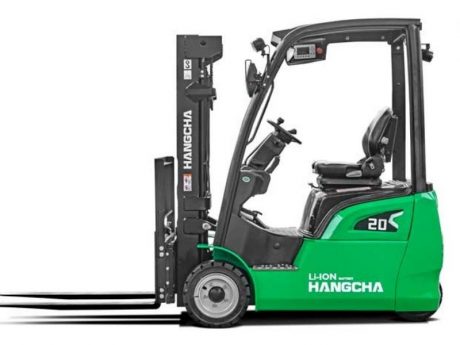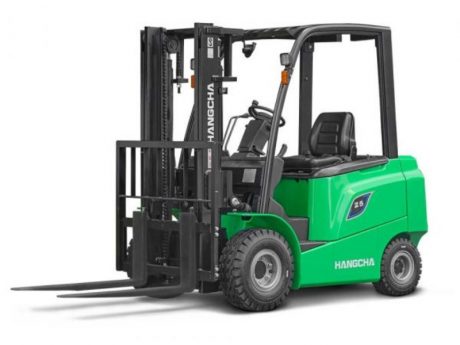Which is best for your application?
Electric forklifts are increasingly common in material handling applications. This rise to prominence is largely driven by a push towards environmentally-friendly material handling solutions and the advantages an electric motor provides over an internal combustion engine including zero emissions, quiet operation, reduced maintenance costs and a greater return on investment.
However, if you’ve decided to purchase an electric forklift, the question becomes whether you should invest in a 3 wheel or a 4 wheel model. To help with this decision, we’ll review the key differences between these variations, their respective strengths and weaknesses, and the best applications for each configuration.
Manoeuvrability
As the name suggests, the distinguishing feature of the 3-wheel electric forklift is the utilisation of a centrally mounted dual steer wheel positioned beneath the counterweight instead of the typical two rear wheel setup. The central point of rotation this creates results in a reduced turning radius and improved manoeuvrability in 3-wheeled models. In fact, 3-wheel forklifts typically having a turning radius 10% smaller than a comparable 4-wheel model. This manoeuvrability is particularly useful in indoor applications, such as warehousing and logistics facilities, where your bottom-line is intricately tied to storage density and aisle width. As such, 3-wheel models are an excellent choice in these applications and wherever else space is limited space.
Power and Capacity
While less manoeuvrable than 3-wheel models, 4-wheel electric forklifts compensate with an increase in overall power and lift capacity. By utilising 4 points of contact with the ground – two in the front and two in the rear – 4-wheel models distribute the axel load and the forces associated with operation over a large surface area. Consequently, 4-wheel electrics can safely handle more torque and heavier loads than a comparable 3-wheel model. 3-wheel models have lifting capacities up to 2000kg., while 4-wheel models are available with maximum lifting capacities in excess of 10,000kg.
Cost
In comparison to internal combustion models, electric forklifts in general provide a greater return on investment. While the initial purchase price for electric forklifts tends to be higher than a comparable IC forklift, the investment is offset by the fact that electric forklifts tend to cost less to maintain per hour and have an expected lifespan 20-30% longer. And, since 3-wheel models tend to have a lower retail price than a 4-wheel model of the same capacity, it’s possible to extract an even greater return on investment.
Stability
Similar with lifting capacity and torque, the 4 points of contact in a 4-wheel configuration also provides an advantage in terms of overall stability. As such, 4-wheel models are an ideal fit if you’re working in an application with uneven ground as greater lateral stability and an additional drive tire prevents incidences of tipping while preventing the unit from getting stuck in deeper ruts on uneven terrain. The improved stability provided by the 4-wheel configuration also has an impact to gradeability, as this allows them to safely and effectively handle steeper grades than 3-wheel models. The importance of this cannot be overstated in applications that utilise loading ramps or where electric forklifts are used in a combination of indoor and outdoor environments.
Overview of 3-Wheeled Models:
- Strengths – greater manoeuvrability and lower cost.
- Weaknesses – limited lifting capacity and inability to operate on uneven ground.
Suitable Applications – warehousing, logistics, retail, food and beverage industry, etc.
Overview of 4-Wheeled Models
- Strengths – greater stability, lifting capacity and power.
- Weaknesses – less manoeuvrable and more expensive.
Suitable Applications – warehousing, greenhouses, distribution centres, loading docks, manufacturing, etc.
As you can see, there are a number of advantages and disadvantages to each configuration. Ultimately, whether you purchase a 3-wheel, or a 4-wheel electric forklift depends on the nature of your needs and application.
If you need a cost-effective and manoeuvrable unit for use on the smooth concrete floors of a light-duty indoor application, your best bet is a 3-wheel model. On the other hand, if you’re dealing with heavier loads, more intense usage or uneven ground in an indoor/outdoor application, you’ll want to select a 4-wheel model.


